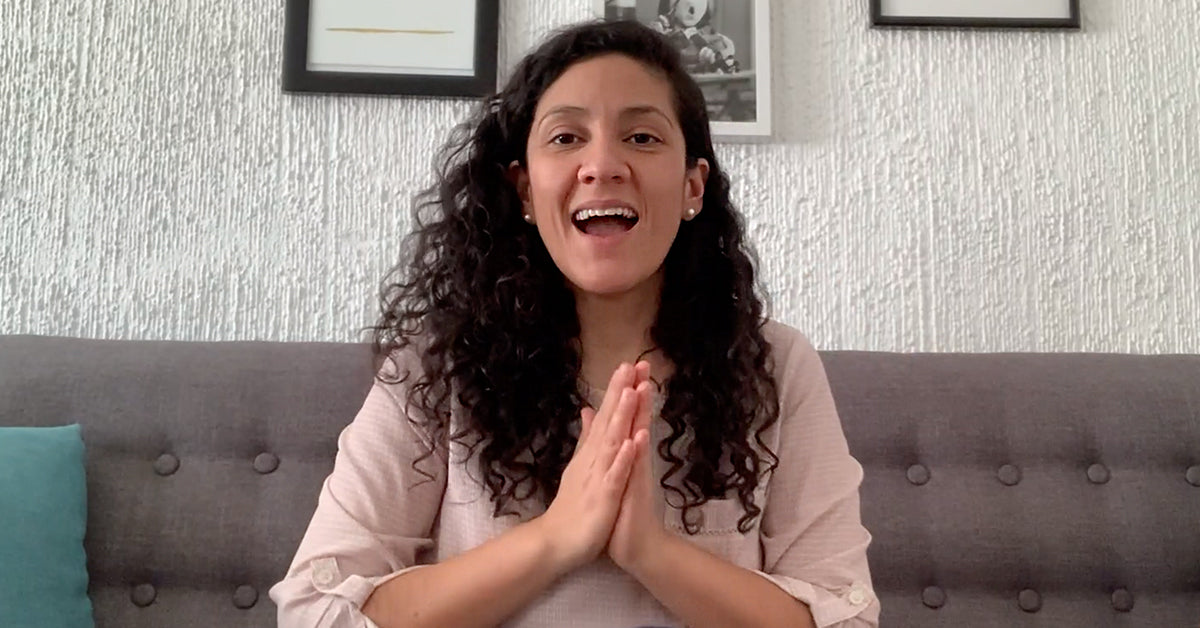Circumstances may find you spending a lot more time at home with your family. While you typically long for precious time like this, you might feel that this new extreme togetherness is starting to put your family at odds with each other a little too often.
If you’re accustomed to heading out to work every day and your new “office” is a corner of the laundry room, or a walk-in closet, or the kitchen table, it can be difficult to feel positive and productive while surrounded by the constant clatter and clutter of kids, dishes, dogs, and a beeping microwave.
Your new normal requires you to have the patience of a saint, a laser-like ability to focus, and the creative mind of a six-year-old to keep your kids happily occupied.
Times like these challenge the best of us. Award yourself 5 stars and consider adopting the techniques of Montessori at Home and Positive Discipline courtesy of Ama, a Montessori guide and positive discipline parent educator.
Family Meetings
Let’s all take a deep breath. Yes, times are challenging, but there’s always something you can do to help improve the situation and ensure everyone is cared for.
Sometimes a ritual and some structure can help. Family meetings are a way to foster family connections, solve nagging problems, and celebrate the things you all love about one another when you’re not driving each other crazy.
Regular family meetings can help create feelings of safety and harmony, especially at times when you and your family are especially stressed, worried, or overwhelmed.
Be sure to set a weekly meeting time that everyone is aware of in advance. When it’s time to meet, know that there is wisdom in following each of the following steps in turn.
1. Start With Gratitude
Begin your meeting with gratitude. Ask who’d like to share why they’re grateful for their parent, child, sibling, or extended family member who might live with you. Keep it specific, such as, “I’m grateful that Zack helped me put away the groceries,” or, “Sophie played in her room while I was busy with work.”
Not only does gratitude set the tone, but it can also serve as positive reinforcement when you acknowledge actions like these in your family forum.
Encourage, but don’t force participation as you want people to be comfortable and authentic.
2. To-Do List: Calendar & Chores
Create a family calendar for chores and special activities and make it a part of your conversation. Your calendar should be visible to all and include special events and happy occasions, not just tasks like emptying the dishwasher.
Birthday reminders, holidays, special events, and vacations can reside here. If there’s a beach trip coming up, put it on the calendar and assign tasks for finding the beach towels and the floaty things, plus a pail for beachcombing.
This is also the place for weekly and daily tasks like taking out the trash, helping in the kitchen, making beds, and putting away toys.
Make the calendar a part of the conversation as you discuss who should do what and when.
3. Plan a Family Activity
These days, outings might only take you as far as your backyard but they can be planned with creativity, like a game for spotting different birds, bugs, and plants. Maybe it’s time to plant some flowers.
Movie night? With popcorn?
Maybe you can play a favorite board game or build something together. A simple home improvement project could become a family adventure.
Rather than talking in terms of possibilities, talk about what will happen. Decide on an activity and agree on a specific time and date for it. Put it on your calendar and decide who will help make it happen.
4. The Agenda: Concerns & Suggestions
This is the place to air the things that the people under your roof are struggling with. Maybe your first-grader doesn’t get why you’re not spending more time with her. After all, “you’re home all the time now, Mom!”
Perhaps your bored teenage son has found himself enamored with yard work – hooray! – but tends to fire up the leaf blower at inopportune times, like when you’re on a conference call.
This isn’t the place to pummel each other with grievances. Rather, offer up the issue for brainstorming by the collective and don’t dismiss any potential – possibly quirky – solutions. Write them all down.
Then, as a group, decide on the best one. If there isn’t a viable answer in there somewhere, move on and agree to revisit next time.
5. Close Your Meeting With a Fun Activity
People will come for the meeting and stay for the dessert. The dessert can be an actual treat, storytelling or book-reading time, exercise time, or whatever the consensus is among your family.
Closing with a fun activity bookends your meeting with positivity. When you start with gratitude and end with fun, you create a welcome ritual that can evolve into a family tradition.
Simplicity & Intention are Key
Remember: setting an intention for your meeting is important, as is keeping it simple. You already have enough going on. Meeting time is a place to hit the pause button and create the space to be heard and let everyone know you’re all still there for one another.
Some people will have more on their minds than others. Be supportive, but don’t allow someone to carry on in anger with no apparent resolution in sight. Stay solution-focused.
If a problem can’t be solved, acknowledge that it remains unsolved and agree to take it up in your next meeting.
Don’t blame others and do keep meetings short. Your family meeting should be energizing, not deflating.
Stay tuned for more #HereForYou parenting sessions your the Shapermint family.







































Leave a Comment
post a comment